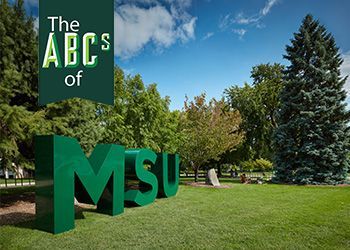Elysia Borowy-Reeder: Dream Job Spotlights Detroit Artists

As a kid, Elysia Borowy-Reeder would get dropped off on Woodward Avenue on Saturday mornings for art classes, to walk through the tall doors of the Detroit Institute of Arts and live, for a while, with objects.
She learned about art, but through the objects—murals, sculpture—she also learned about cultures and history.
“That’s when I made all kinds of connections and I felt the most alive as a little kid, when I was at the DIA,” she said. “My mind was properly blown.”
She knew she’d make it back to that feeling. She didn’t know she’d make it back to Woodward: As executive director of the Museum of Contemporary Art Detroit—after stints at museums in Chicago, Milwaukee and Raleigh, N.C.—Borowy-Reeder works four blocks from the DIA.
But at MOCAD, the objects might travel more, like the Mike Kelley Mobile Homestead, a replica of the artist’s childhood home. Or the painting might not hang in a gallery, but cover the museum’s exterior wall, like the large-scale graffiti piece honoring the well-known street tagger NEKST.
Borowy-Reeder, who graduated from MSU with master’s degrees in art history and art education, said she’s working her dream job.
“I think of it as one of the most progressive museums in the country,” she said. “Some museums are about collecting, and that is their mission. But for me, what I want to do in this lifetime is work with artists to present their projects. That is what MOCAD does.”
When she arrived in 2013, MOCAD had about 20,000 visitors a year. Borowy-Reeder said it expects to see 110,000 in 2015. Under her leadership, the museum engages visitors with programs that are more “techno brunch” than gallery walk. For artists, she aims to provide a platform: to find the tools they need to realize their vision.
In one week, MOCAD might host a teen lock-in, a gallery show, a Family Day Extravaganza, and an Alcoholics Anonymous meeting—a form of service, Borowy-Reeder said, that she believes museums owe their communities.
Detroit City, the museum’s multiyear research project, is part exhibition, education and performance. Its international artist-exchange program offers Detroit artists a foray into the global conversation about art (and, back at MOCAD, a solo show).
The project examines the city through multiple lenses—artistic, political, cultural, economic—and asks what it means to make art in Detroit. It also aims to inspire and recognize the artists she credits with spurring the city’s revitalization.
“There’s a lot of amazing talent in Detroit,” Borowy-Reeder said, “and we want to put that in the spotlight.”



